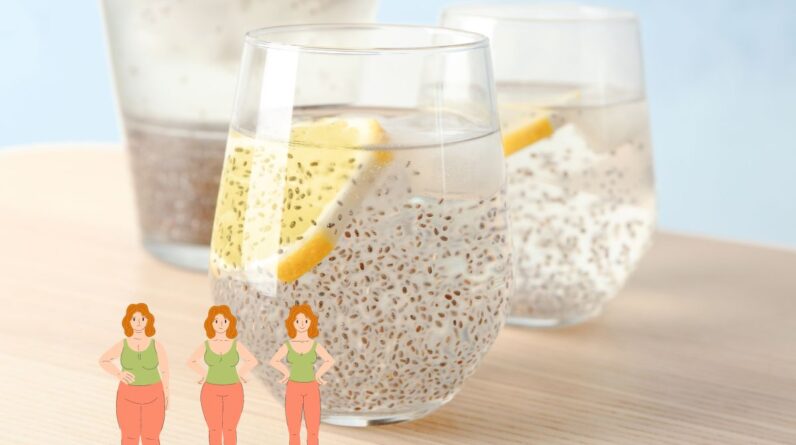
Fasting trends have been popular in the health world for quite some time. From intermittent fasting to water fasting, people are experimenting with different ways to restrict food intake for various health benefits.
But a new different type of fast came across my news feed recently. Have you heard of dry fasting?
It’s one of the most extreme forms of fasting, and as the name suggests, it takes things up a notch by cutting out not only food but also water.
The big question is: Is it safe?
Let’s take a closer look at what dry fasting is all about and whether it’s something you should try.
This post may contain affiliate links, which helps keep this content free. Please read our disclosure for more info.
What Is Dry Fasting?
Dry fasting is exactly what it sounds like—no food, no water, and in some cases, no contact with water at all.
Most fasting methods, like intermittent fasting or water fasting, allow at least water consumption to help support your body through the fast.
Dry fasting, however, is more extreme. It involves completely refraining from both eating and drinking for a set period of time.
This type of fasting pushes the body into a more intense state than other fasting methods, which is why it’s seen as a more advanced or restrictive form of fasting.
There are two main types of dry fasting, each with different levels of restriction:
- Soft Dry Fasting: This involves avoiding food and drink but still allowing contact with water. For example, you can take a shower, wash your hands, or brush your teeth. It’s considered a less extreme version of dry fasting because your body can still absorb small amounts of water through the skin or mucous membranes.
- Hard Dry Fasting: This stricter form of dry fasting takes things to another level. Not only do you avoid food and water, but you also avoid any contact with water. That means no showers, no washing your hands, no brushing your teeth, and no exposure to water in any form. It’s the most extreme version of fasting and puts extra pressure on your body as it operates with zero hydration input.
So, how does dry fasting compare to other methods? The key difference is the level of restriction.
Intermittent fasting focuses on eating only during specific windows of time, while water fasting eliminates food but allows water.
Dry fasting, on the other hand, removes both food and liquid from the equation, making it much harder on the body.
While intermittent and water fasting still maintain hydration, dry fasting takes away that essential lifeline, making it significantly more challenging and risky.
How Does Dry Fasting Work?
To understand dry fasting, it helps to know how the body reacts to fasting in general. When you fast, your body typically goes through a metabolic shift, entering a state called ketosis.
In ketosis, your body switches from burning carbohydrates (its primary energy source) to burning fat. This process happens because, with no food intake, your body must rely on stored fat to produce energy.
While this is common in most types of fasting, dry fasting adds an extra layer of stress by removing water as well, which accelerates the body’s adaptation process.
Dry fasting takes this a step further by forcing your body to function without hydration. Without water, the body’s natural processes, like digestion and energy production, become more challenging, which is why dry fasting is seen as more intense.
Supporters of dry fasting claim that because the body is deprived of both food and water, it enters an even deeper state of ketosis.
This heightened state supposedly forces the body to become more efficient in breaking down fat and triggers processes like autophagy, where cells break down and recycle old, damaged components. Autophagy is often praised for its role in cellular repair, detoxification, and even anti-aging benefits.
Proponents also argue that because the body isn’t using energy for digestion or processing hydration, it can redirect its focus toward “repairing” itself.
The theory is that dry fasting may speed up fat loss, rid the body of toxins, and stimulate faster cell regeneration. Some even believe that this practice leads to a deep detoxification effect, cleansing the body at a cellular level more effectively than other fasting methods.
However, it’s important to highlight that these claims are mostly anecdotal. While the idea of deeper ketosis and enhanced autophagy sounds promising, there isn’t strong scientific evidence to back up many of these theories.
Most of the research on fasting has been done on more traditional forms, like intermittent and water fasting, where hydration is maintained. Dry fasting remains relatively unstudied, making it harder to assess its true impact and safety.
Potential Benefits of Dry Fasting (According to Supporters)
Despite the lack of extensive research, dry fasting enthusiasts tout several potential benefits that they believe make this practice worthwhile.
These claims are based on personal experiences and anecdotal evidence rather than large-scale scientific studies. Here are a few of the most commonly mentioned potential benefits:
- Weight Loss: Like other forms of fasting, dry fasting is believed to promote rapid weight loss. When the body is deprived of both food and water, it has no choice but to burn stored fat for energy. Supporters argue that the added element of water restriction makes the fat-burning process even more intense, leading to faster weight loss compared to water fasting or intermittent fasting. The body is thought to deplete glycogen stores more quickly and shift into deeper ketosis.
- Mental Clarity: Some people report experiencing heightened mental clarity during dry fasting. They claim that the absence of food and water forces the body to focus energy on brain function, leading to improved focus and sharper thinking. This mental clarity is thought to stem from the body being in a state of ketosis and reduced digestive load, which may free up energy for cognitive processes.
- Reduced Inflammation: Proponents argue that by eliminating both food and water, inflammation in the body may be reduced. The idea is that digestion and hydration can sometimes contribute to inflammation, especially if someone consumes inflammatory foods or drinks. By removing these elements, supporters believe the body has a better chance to heal and lower overall inflammation levels.
- Enhanced Autophagy: One of the more popular claims about dry fasting is that it enhances autophagy, the process by which cells break down and recycle old, damaged components. Autophagy is often praised for its potential role in anti-aging and disease prevention. Supporters of dry fasting believe that the absence of water forces the body into an even more efficient mode of cellular repair compared to other forms of fasting, potentially leading to improved longevity and health at the cellular level.
While these potential benefits sound appealing, it’s important to note that they are mostly based on personal experiences and not backed by rigorous scientific proof.
The research that exists primarily focuses on other types of fasting, like intermittent and water fasting. As a result, the specific effects of dry fasting remain largely speculative, and any benefits should be weighed against the risks involved.
Risks and Side Effects of Dry Fasting
While dry fasting may seem appealing to some, it carries significant risks that should not be overlooked. Here are some of the most important concerns:
Dehydration
The most obvious and serious risk of dry fasting is dehydration. Water is essential for nearly every function in the human body, from regulating temperature to supporting digestion and cognitive function.
Even mild dehydration can cause uncomfortable symptoms like dizziness, fatigue, headaches, and trouble concentrating.
Prolonged or severe dehydration, however, can lead to much more dangerous issues, including kidney damage or failure, heart strain, and even life-threatening complications.
Without water, your body cannot effectively flush out toxins or maintain critical processes, making dehydration a serious concern during dry fasting.
Nutrient Deficiency
When you dry fast, your body is deprived not only of water but also of essential nutrients. This can quickly lead to deficiencies, particularly in key electrolytes like sodium, potassium, and magnesium.
These minerals play a vital role in maintaining proper hydration balance, nerve function, and muscle performance.
A lack of food and water makes it difficult for your body to replenish these crucial nutrients, which could result in electrolyte imbalances.
This, in turn, could cause muscle cramps, weakness, irregular heartbeats, and other health complications.
Organ Stress
Prolonged dry fasting can place significant stress on your internal organs, particularly your kidneys. The kidneys rely on water to filter and eliminate waste products from the body.
Without adequate hydration, toxins can build up, potentially leading to kidney damage or impairing kidney function.
Additionally, other organs like the liver and heart may also face strain during dry fasting, especially when the body becomes more dehydrated and has fewer resources to support vital processes.
This stress can be exacerbated in people who fast for long durations or who already have underlying health conditions.
Unsuitable for Certain Populations
Dry fasting is particularly risky for certain groups of people. Pregnant or breastfeeding women, individuals with chronic health conditions (like diabetes or heart disease), and those on certain medications should avoid dry fasting altogether.
The strain that dry fasting puts on the body, combined with the lack of hydration and nutrients, can exacerbate existing health problems or interfere with medication effectiveness.
For these populations, the risks far outweigh any potential benefits, making dry fasting an unsafe practice.
These risks highlight the importance of considering your overall health and hydration needs before attempting such an extreme form of fasting.
Consulting with a healthcare professional is crucial before trying any fasting method, especially one as restrictive as dry fasting.
Is Dry Fasting Safe?
So, is dry fasting safe? In most cases, experts say no. While short periods of dry fasting may be manageable for some healthy individuals, the potential risks far outweigh any possible benefits.
The human body is designed to function with adequate hydration, and depriving it of water for long periods can be harmful.
Most dietitians and healthcare professionals agree that while fasting may offer some health benefits, dry fasting takes things too far.
Hydration is key to maintaining balance in your body, and skipping water, even for a short time, can cause problems that could easily be avoided by sticking to more traditional fasting methods.
Is Dry Fasting Worth the Risk?
Dry fasting is undoubtedly one of the most extreme forms of fasting, requiring a complete abstention from both food and water.
While proponents often highlight potential benefits like rapid weight loss and enhanced autophagy, these claims are mostly anecdotal and not backed by solid scientific evidence.
More importantly, the risks—such as dehydration, nutrient deficiencies, and stress on vital organs—can’t be ignored. These dangers make dry fasting a risky choice for most people, especially without proper medical supervision.
If your goal is to lose weight or improve your overall health, there are much safer and more balanced approaches to consider.
Fasting can be beneficial, but there’s no need to resort to extreme measures like dry fasting. Approaches like intermittent fasting or water fasting provide similar benefits without the high risks.
For those looking for an effective and sustainable way to shed pounds, there’s a better option.
The 21-Day Fat Loss Challenge offers a structured and safer way to kickstart your weight loss journey.
This program is designed to help you achieve your goals without compromising your health.
With a focus on healthy eating, regular exercise, and sustainable habits, the 21-Day Fat Loss Challenge is a great alternative to extreme fasting methods such as dry fasting..
You can learn more about it here and take the first step toward reaching your fitness goals in a healthier way.







